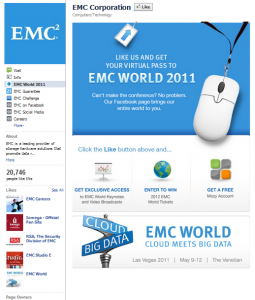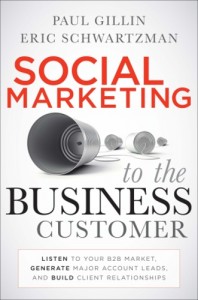How Sharing Pays Dividends
The Sharing Dividend
If you’re looking for an expert on computer security, it’s almost impossible not to find Bruce Schneier. The BT chief security technology officer and author of several books on privacy and security uses his blog, Schneier on Security, to provide a constant stream of insights on topics ranging from viruses to the papal selection process.
As a result, Schneier is in the top Google results for all kinds of search queries around security keywords, and this translates into a bounty of press coverage, speaking engagements and high-profile career opportunities.
Schneier’s secret isn’t that he’s an exceptionally gifted writer. It’s that he has a compulsion to share his thoughts. By taking a little extra time to commit them to his blog, he exposes his wisdom to a wide audience.
Anyone can do this today. It’s surprising more companies don’t.
Creating Long-form Content for the Distracted Audience
If you still view view research reports, white papers and customer case studies as a “Big Bang” proposition, then you’re missing the boat. Maximizing audience size and impact is increasingly a matter of summarizing, teasing and packaging in other formats. We need to rethink the way we create longform content and package it as a series of short-form updates.
Tweet research findings as you go along. Capture highlights and blog entries. Summarize case studies in podcast interviews. Create top 10 lists and factoids to post on Twitter. And be ready to promote your finished report through multiple channels upon publication.
The benefits: increased awareness before the content is released and longer shelf life as you promote conversations about it.
Search Essentials – What You MUST Know
Visibility in search engines is critical to nearly every business these days, but the basic mechanics of search are still in mystery to many people. Success begins with good keyword selection and continues with optimal page construction, good descriptions and continuous campaigns to generate inbound links. Providing high quality content is critical to search engine success, and recent revisions to Google’s search engine algorithm reinforces that point.
I recently posted a 38-slide presentation covering the essentials of search. It includes detailed notes that served as a script for an accompanying webcast recording on the subject. Feel free to download the presentation and share it with colleagues who still don’t get why a keyword strategy is so essential to growing your business.
Tip of the Week – Spundge
Occasionally a tool comes along that is so drop-dead useful that it causes you to change the way you work. For me, that tool is Spundge, a content curation console that makes it easy to grab articles and assemble them into a single stream that can be embedded on any website that accepts scripting. It’s like Storify, but more flexible.
Spundge is like a super RSS feed with bookmarking built in. It comes out-of-the-box with more than 45,000 embedded feeds from major news and technology sites, along with Twitter, Facebook, LinkedIn and other social networks. You can add your own feeds and apply whatever filters you like. The engine learns from your choices and consistently delivers you more relevant content.
You can create embeds that display content from your Spundge notebooks in any website that accepts scripting. For a modest fee of US$9 per month, you can generate blog posts from that content using a WYSIWYG editor. But you don’t need the paid account to get a lot of value out of this great new service. I recommend you give it a try.
Read more on my Newspaper Death Watch blog.
Just for Fun: Scale of the Universe

The universe is a mighty big place, and I’ve never seen anything that quite dramatizes that fact like this Flash movie, The Scale of the Universe.
Scroll left to begin your journey at the smallest known particle of Quantum Foam (.0000000001 yoctometers or 10-35 meter. Keep scrolling to the right as you pass neutrinos, quarks, uranium nuclei and other little tiny things.
As you keep scrolling, the scale gets larger: chromosomes, aunts, human beings, Redwood trees, the Hoover dam, California, Ganymede, Alpha Centauri B and so on. At the extreme right is the estimated size of the universe at 1027 meters.
It’s a mesmerizing display with beautiful graphics and even a soundtrack. If it came from the Stanford Linear Accelerator Laboratory, you wouldn’t be at all surprised. But this remarkable animation is the work of two junior high school kids: Carey and Michael Huang.
Carey was the principal architect and Michael put it online. Carey didn’t even do it for extra credit; it was just a fun way to express some relationships he learned about in seventh grade. Here’s the story on ABC News.
MIT might want to get to these kids with the scholarship offer early.














